Gym Home

What sports equipment do I need for a complete home gym setup ?
Setting up a home gym requires careful consideration of various types of sports equipment to ensure a comprehensive workout routine. Here's a summary of the key components: 1. **Cardiovascular Equipment**: Includes treadmills, ellipticals, stationary bikes, and rowing machines for endurance and cardio training. 2. **Strength Training Equipment**: Dumbbells, weight plates, barbells, kettlebells, and resistance bands are essential for building muscle mass and overall strength. 3. **Bodyweight Training**: Pull-up bars, parallette bars, and wall-mounted rings facilitate calisthenics exercises using one's body weight as resistance. 4. **Stretching and Recovery**: Foam rollers and yoga mats aid in muscle recovery, flexibility improvement, and floor exercises. 5. **Additional Items**: An exercise bench, jump rope, and a timer or app can complement your workouts with versatility and intensity tracking. Space availability and budget should guide your choices, allowing you to start with basics and expand gradually. With the right selection of equipment, you can create a well-rounded home gym that supports all aspects of fitness and wellness.
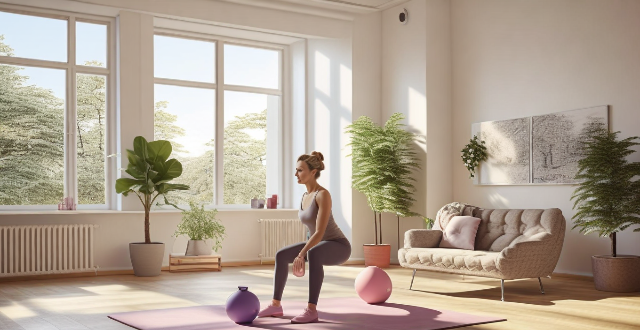
Is it necessary to join a gym or can I do a home workout routine as a woman ?
The decision to join a gym or opt for a home workout routine as a woman depends on personal preferences, fitness goals, time availability, and budget. Advantages of joining a gym include access to equipment, motivation and accountability, and professional guidance. Advantages of home workouts include convenience, cost-effectiveness, and flexibility. Considerations for women include fitness goals, time availability, budget, and personal preferences. Both options can be effective in maintaining fitness levels, so it ultimately comes down to individual circumstances and preferences.
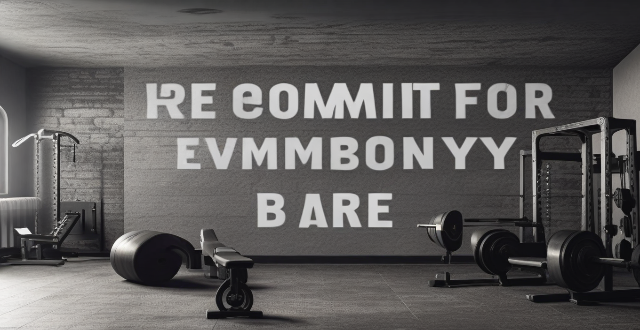
Can you recommend any budget-friendly gym equipment ?
The text offers recommendations for budget-friendly gym equipment, including multi-functional fitness equipment like adjustable dumbbells, resistance bands, and a jump rope; bodyweight training essentials such as a pull-up bar, push-up stands, and an ab wheel; and additional accessories like a gym mat, foam roller, and kettlebell. These affordable items can help achieve fitness goals without the need for expensive gear or a gym membership.
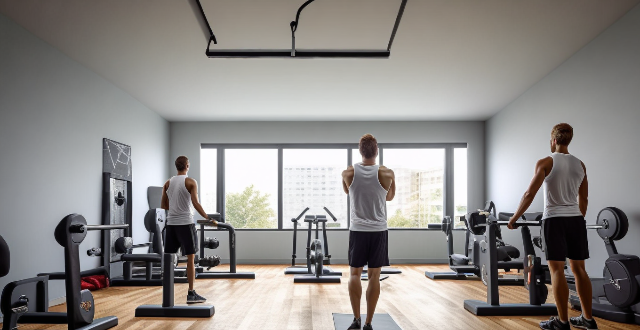
Is it necessary to have a gym membership to experience mental rejuvenation through exercise ?
Exercise is beneficial for mental health, but a gym membership isn't necessary. Benefits include reduced stress and anxiety, improved self-esteem, better sleep quality, and enhanced cognitive function. Gym pros: diverse equipment, group classes, personal training, community support. Cons: cost, time constraints, crowdedness. Alternatives: home workouts, outdoor activities, sports clubs, dance classes. The key is finding an enjoyable activity that can be consistently incorporated into one's lifestyle.

Is it necessary for employers to provide fitness facilities or subsidize gym memberships ?
As the importance of physical health and wellness becomes increasingly recognized, many employees are looking for ways to maintain an active lifestyle. One option that has gained traction in recent years is for employers to provide fitness facilities or subsidize gym memberships as part of their employee benefits package. Providing fitness facilities or subsidizing gym memberships can help employees stay healthy and energized, which can lead to increased productivity at work. Studies have shown that regular exercise can reduce fatigue, improve mood, and enhance cognitive function, all of which can contribute to better job performance. Offering fitness perks can also be a powerful tool for attracting and retaining top talent. In today's competitive job market, companies need to offer unique benefits that set them apart from their competitors. By providing access to fitness facilities or subsidizing gym memberships, employers can demonstrate a commitment to their employees' well-being and create a positive work culture that fosters loyalty and engagement. While the initial investment in setting up a fitness facility or subsidizing gym memberships may be significant, there are potential long-term cost savings to consider. By promoting a healthy lifestyle among employees, employers may be able to reduce healthcare costs associated with chronic diseases related to poor diet and lack of exercise. Additionally, reducing absenteeism due to illness or injury can also save money in the long run. However, one of the main concerns about providing fitness facilities or subsidizing gym memberships is the cost. Depending on the size of the company and the scope of the program, implementing such benefits can be expensive. Employers must weigh the potential benefits against the financial implications before making any decisions. Another challenge is ensuring that the program is accessible and convenient for all employees. If the company is located in a remote area or has multiple locations, it may not be feasible to provide on-site fitness facilities or subsidize gym memberships at nearby clubs. Additionally, some employees may prefer working out at home or participating in outdoor activities rather than using a gym. Employers must also consider legal issues when implementing fitness programs. For example, they should ensure that any fitness facilities comply with local building codes and safety regulations. They should also be aware of potential liability issues if employees sustain injuries while participating in company-sponsored fitness activities. In conclusion, while it is not absolutely necessary for employers to provide fitness facilities or subsidize gym memberships, doing so can offer several benefits including increased productivity, improved retention and recruitment efforts, and potential cost savings over time. However, employers must carefully consider the financial implications, logistical challenges, and legal considerations before implementing such programs. Ultimately, whether or not to offer these benefits will depend on each individual company's unique circumstances and priorities.
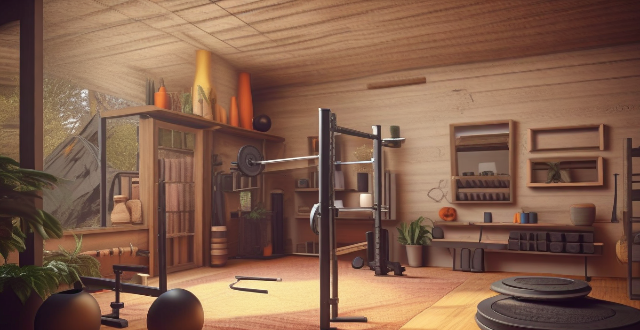
How can I create a effective home gym on a budget ?
Creating a home gym on a budget requires identifying fitness goals, choosing multipurpose equipment, investing in quality mats, incorporating bodyweight exercises, utilizing online resources, and establishing a consistent routine.
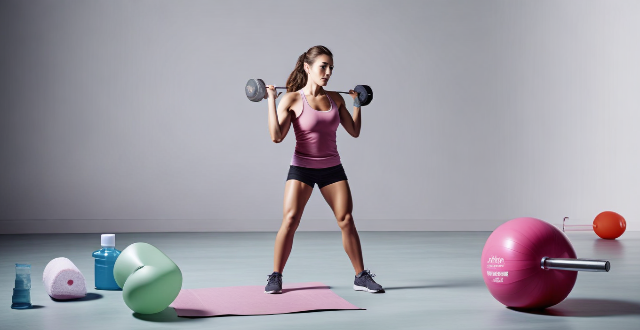
What are some tips for staying motivated during a gym workout ?
Staying motivated during a gym workout can be challenging, but crucial for maintaining a consistent exercise routine. Tips include setting clear goals, creating an energetic playlist, finding a workout buddy, mixing up your routine, tracking progress, rewarding yourself, visualizing success, embracing challenges, getting adequate rest, and focusing on how exercise makes you feel. By implementing these strategies, you can make the most out of your gym workouts and stay consistent in your fitness journey.

How long should my gym sessions be to maximize results ?
Maximizing Gym Sessions for Optimal Results: The duration of your gym sessions can significantly impact your results. To maximize your outcomes, consider factors such as your goals, fitness level, and schedule. Recommended durations vary based on goals: muscle building requires 60-90 minutes, weight loss benefits from 30-45 minutes of HIIT or circuit training, and cardiovascular health improves with 30-60 minutes of moderate-intensity workouts. Intensity matters, with shorter high-intensity workouts being more effective for fat loss and longer moderate-intensity sessions building endurance. Listen to your body and adjust accordingly, allowing for adequate rest and recovery days to prevent injury and promote muscle growth.

What are some effective cardio exercises that can be done at the gym ?
Effective Cardio Exercises at the Gym Cardio exercises are an essential part of any fitness routine. They help improve cardiovascular health, burn calories, and increase endurance. Here are some effective cardio exercises that can be done at the gym: 1\. Treadmill Workouts 2\. Elliptical Machines 3\. Stationary Bikes 4\. Rowing Machines 5\. Step Mills 6\. VersaClimber/Vertical Climber 7\. Group Fitness Classes 8\. Other Machines
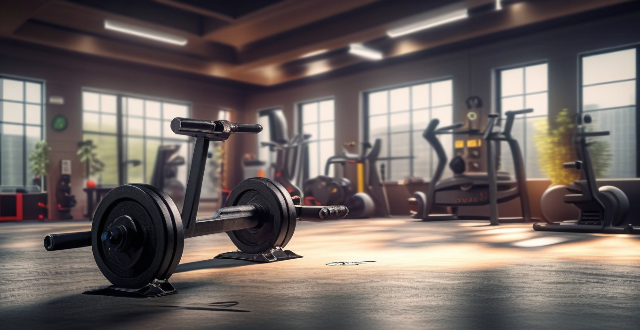
How do high-tech gym equipment and machines benefit users ?
High-tech gym equipment offers personalized workouts, real-time feedback, advanced tracking, motivation, convenience, and safety.

How can I track my progress if I'm only exercising at home ?
**Tracking Progress in Home Exercises** When working out at home, monitoring your progress helps you stay motivated and makes adjustments to your routine. Here are key strategies: 1. **Set Clear Goals:** Divide goals into short-term (e.g., increasing push-ups) and long-term (e.g., weight loss). Ensure they're specific and achievable. 2. **Keep a Workout Journal:** Record details of each session, reflect on what works, and make necessary changes. 3. **Use Technology:** Fitness apps and smart devices can track metrics like steps and heart rate. 4. **Take Measurements:** Regularly measure weight, body fat, and performance metrics to see physical changes. 5. **Evaluate Intensity and Recovery:** Use RPE to assess workout difficulty and monitor recovery times after exercise. 6. **Compare Against Baseline:** Regularly reassess initial measurements and performances to gauge improvement. 7. **Utilize Visual Cues:** Photos and mirror checks can show changes in your physique over time. 8. **Engage in Strength Training:** Track the weight lifted and rep maxes to indicate strength gains. 9. **Focus on Feel and Function:** Pay attention to how your body feels during workouts and improve the quality of movement. By employing these methods, you can effectively track your progress while exercising at home, ensuring consistent improvements and maintaining motivation.

Where are some of the most famous celebrity mansions located ?
Celebrities often live in lavish, awe-inspiring homes that capture the attention of fans and the media alike. These mansions are not only architectural marvels but also symbols of success and luxury. Here's a list of some of the most famous celebrity mansions and their locations: 1. Oprah Winfrey's Montecito Estate - Situated on 23 acres, this estate features a main house with 7 bedrooms and 14 bathrooms. It includes an orchard, a tea house, a barn, and a tennis court. 2. George Clooney's Villa Oleandra - This stunning property overlooks Lake Como and comes with a swimming pool, a gym, and a home theater. It was originally a simple farmhouse but has been renovated into a luxurious villa. 3. Jay-Z and Beyoncé's Bel Air Mansion - This contemporary mansion spans 19,000 square feet and boasts 8 bedrooms, 11 bathrooms, a basketball court, and a music studio. The couple purchased it for approximately $88 million. 4. Taylor Swift's Rhode Island Estate - This coastal retreat is known for its stunning ocean views and includes multiple houses on the property. There's also a private beach and a pier. 5. Kim Kardashian and Kanye West's Hidden Hills Home - This minimalist mansion has 4 bedrooms and features a gym, a movie theater, and a hair salon. It also has a unique all-white color scheme throughout. 6. Howard Stern's Penthouse Suite - This apartment takes up three floors of a building and includes a massive master bedroom suite, a recording studio, and panoramic city views from its numerous terraces. 7. Tom Brady and Gisele Bündchen's Brookline Mansion - This expansive estate sits on 5 acres of land and includes a moat, a gas lighting system, and a 6,600-square-foot mansion with 12 bedrooms. 8. Simon Cowell's Malibu Beach House - Overlooking the Pacific Ocean, this beachfront property features floor-to-ceiling windows offering unobstructed ocean views, a large outdoor patio, and direct beach access. 9. Elon Musk's Bel Air Estate - This modern mansion is equipped with a two-story library, a smart home system, and an underground garage that can hold up to 100 cars. It was previously owned by Gene Wilder. 10. Michael Jordan's Chicago Estate - This sprawling estate includes a basketball court, a putting green, a regulation-size tennis court, and a separate guest house. It also has an infinity pool with views of Lake Michigan.

How can I integrate smart home devices with my home security system ?
The article provides a step-by-step guide for integrating smart home devices with a home security system, including determining compatibility, selecting the right devices, installing and configuring them, connecting to the security system, and testing the integration. The goal is to enhance safety and convenience by allowing remote control and monitoring of access, video surveillance, sensors, and lighting.
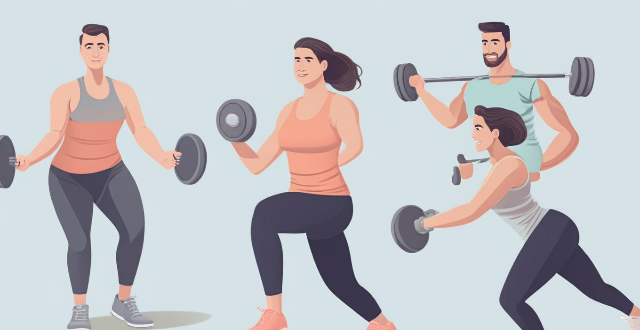
What is the role of a fitness instructor in a gym ?
A fitness instructor is responsible for guiding and motivating gym members to achieve their fitness goals. Their roles include designing customized workout plans, providing personal training sessions, leading group fitness classes, educating members on health and fitness topics, and maintaining a clean and safe environment. The ultimate goal of a fitness instructor is to help members reach their fitness objectives and improve their overall health and well-being.

How can I avoid injuries while working out at home ?
Working out at home can be convenient but also risky. To avoid injuries, warm up before starting your workout, use proper form and technique, start with lower weights and resistance, take breaks and rest between sets, cool down after your workout, and listen to your body. Following these tips will help you have a safe and effective workout routine at home.

How can I incorporate stretching into my gym routine ?
Stretching is essential for any fitness routine. It improves flexibility, reduces injury risk, and enhances performance. Here are tips on incorporating stretching into your gym routine: dynamic stretches before workouts, foam rolling, active isolation stretches during workouts, resistance band stretches, static stretches after workouts, yoga or Pilates, and cooldown stretches. Incorporating stretching into your routine will help you reap the benefits of a well-rounded fitness regimen.
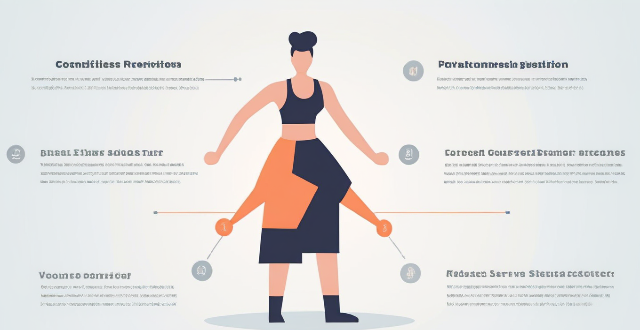
What is a good workout routine for beginners at the gym ?
This article provides a comprehensive guide for beginners on how to start a workout routine at the gym. It includes warm-up exercises, cardiovascular and strength training exercises, and cool down stretches. The article emphasizes the importance of starting slowly and gradually increasing the intensity of workouts. With dedication and consistency, beginners can achieve their fitness goals and improve their overall health and well-being.

What are the benefits of hiring a personal trainer at the gym ?
Hiring a personal trainer at the gym provides motivation, customized workouts, improved technique, variety in exercises, time efficiency, education on fitness and nutrition, mental health benefits, injury prevention, and social support. This investment can lead to long-term success in achieving fitness goals.

What is the impact of smart home technology on the real estate market ?
Smart home technology has a significant impact on the real estate market by increasing home value, improving energy efficiency, enhancing security, allowing for customization and personalization, and integrating with other technologies. This makes homes equipped with smart devices more attractive to potential buyers, leading to faster sales and higher prices.

How can I ensure electrical safety in my home ?
Electrical safety is crucial for maintaining a secure home environment. Hire licensed electricians, schedule inspections, keep appliances clean, avoid overloading outlets, be cautious around water, childproof your home, use proper lighting, keep flammable materials away from electrical appliances, and know how to shut off power in emergencies.

How often do high-profile personalities hit the gym to stay in shape ?
High-profile personalities, including celebrities, athletesHigh-profile personalities, including celebrities, athletes often maintain a rigorous fitness routine The frequency at which they hit the gym can vary depending on their lifestyle, profession, and personal goals. Celebrities may work out multiple times a day or only a few times per week due to busy schedules. Athletes typically have structured training regimens, training several hours a day to maintain peak physical condition. Public figures may incorporate workouts into their daily routines or hire personal trainers. Actors and actresses may work with trainers to develop specific workout plans for roles, while models engage in daily workouts to maintain a lean physique. Musicians may incorporate regular workouts to improve stamina and overall fitness. Personal fitness goals can also influence gym frequency, ranging from improving overall health to achieving specific athletic accomplishments. Consistent fitness routines are crucial for high-profile personalities to stay in shape and perform at their best.

How can I prevent injuries while lifting weights at the gym ?
Lifting weights is a great way to build strength and muscle, but it's important to do so safely to prevent injuries. Here are some tips on how to avoid getting hurt while lifting weights at the gym: - Warm up before you lift with stretching and light cardio. - Use proper form and technique, focusing on body alignment and avoiding momentum or jerky movements. - Start with lighter weights until you have perfected your form for each exercise. - Choose the right equipment, wearing appropriate clothing and shoes, and using quality weightlifting gear if needed. - Listen to your body, paying attention to pain and taking breaks and rest days to avoid fatigue and injury. - Get professional guidance from a trainer, especially if you're new to weightlifting or looking to fine-tune your techniques.

How do I properly warm up before a gym workout ?
A proper warm-up is crucial before starting any gym workout. It helps to prepare your body for the physical demands of exercise, reduces the risk of injury, and improves performance. Here are some steps to follow for a proper warm-up: 1. Start with 5-10 minutes of low-intensity cardiovascular exercise such as walking, jogging, or cycling. 2. Move on to dynamic stretching exercises that involve moving your joints through their full range of motion while gradually increasing intensity. 3. Perform activation exercises that activate specific muscle groups that you will be using during your workout. 4. Spend a few minutes rolling out areas that feel tight or sore with a foam roller. 5. Perform mobility drills that help to improve flexibility, stability, and coordination. 6. Finally, perform a few warm-up sets of the exercises you plan to do in your workout. Remember to listen to your body and adjust the duration and intensity of your warm-up based on how you feel. A proper warm-up should leave you feeling energized and ready to tackle your workout.

What are some eco-friendly cleaning tips for my home ?
Eco-friendly cleaning tips for your home include using natural products like vinegar, baking soda, and lemon juice; reducing plastic waste by opting for reusable cloths and containers; minimizing water usage during cleaning tasks; choosing energy-efficient appliances; and making your own cleaning solutions. These practices help maintain a clean home while also reducing environmental impact.

What are the most popular voice-activated smart home gadgets ?
Voice-activated smart home gadgets have become increasingly popular for their convenience. The most common ones include smart speakers like Amazon Echo, Google Nest, and Apple HomePod, which can play music, set alarms, provide weather updates, and answer questions. Smart light bulbs, such as Philips Hue, can be controlled to turn on/off, adjust brightness, and change colors using voice commands.
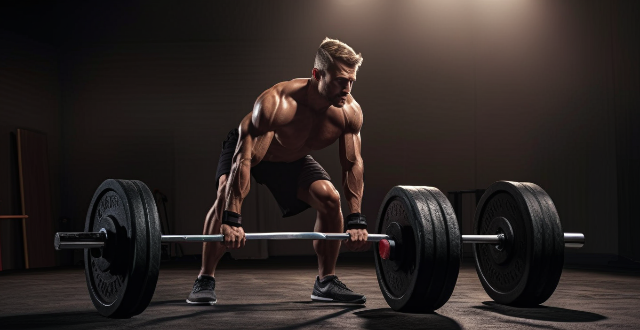
What are the best stretches for cooling down after a gym session ?
After a gym session, it's crucial to gradually cool down your body. Here are the best stretches for that: hamstring, quadriceps, calf, hip flexor, and back stretches. These exercises help reduce heart rate, lower blood pressure, prevent muscle soreness, improve flexibility, and range of motion. Remember to hold each stretch for at least 30 seconds and avoid bouncing to prevent injury.

How often should I go to the gym to see results ?
The frequency of gym visits depends on fitness goals, current fitness level, and workout intensity. Factors to consider include: 1. Fitness Goals: - Weight Loss: 3-5 days per week of moderate to high-intensity exercise. - Muscle Building: Strength training 2-3 times per week with rest days. - Endurance Training: Run or cycle 3-4 times per week. - Flexibility/Yoga: Practice daily for best results. 2. Current Fitness Level: - Beginners: Start with 2-3 days per week and gradually increase. - Intermediate: Aim for 3-4 days per week of targeted workouts. - Advanced: Up to 5-6 days per week of specialized training. 3. Intensity of Workouts: - High Intensity: Allow for more recovery time; 2-3 intense sessions per week. - Moderate Intensity: Can be done 3-5 times per week. - Low Intensity: May be done daily, but focus on active recovery. Recommended routines vary depending on the goal, such as cardiovascular exercise and strength training for weight loss, compound exercises for muscle building, long slow distance and interval training for endurance, and daily practice for flexibility and yoga. Tips for success include setting realistic goals, mixing up exercises, listening to your body, and staying consistent. Rest days are important for recovery and growth.

Are there any proven benefits of offering gym memberships or fitness classes as part of workplace wellness programs ?
The text provides a topic summary of the benefits of offering gym memberships or fitness classes as part of workplace wellness programs. It highlights the advantages in terms of improved employee health and well-being, enhanced workplace atmosphere and culture, and financial benefits for employers. The summary also emphasizes that these programs can lead to reduced stress levels, increased energy levels, improved cardiovascular health, increased employee morale, improved teamwork and collaboration, lower absenteeism rates, reduced healthcare costs, increased productivity, and lower turnover rates. Overall, the text suggests that offering gym memberships or fitness classes as part of workplace wellness programs can have numerous benefits for both employees and employers.

How can I apply minimalist principles for quick and effective home organization ?
Minimalism is about intentional living and promoting clarity, calmness, and efficiency in your home. To apply minimalist principles for quick and effective organization, start by identifying your priorities through listing necessities and assessing functionality. Simplify your space by removing unnecessary items and creating open areas. Categorize and contain items by grouping them together and using clear labeling for easy accessibility. Streamline routines with daily maintenance and simplifying tasks through automation or batch processing. Regularly evaluate and adjust your organizational systems as needs change, embracing quality over quantity and mindful acquisition. Achieving an organized home reflects a purposeful lifestyle supporting well-being and function.